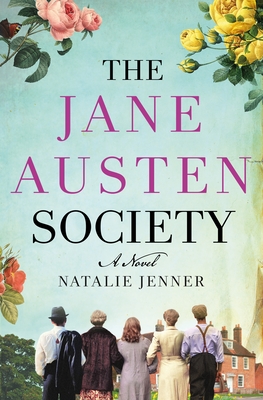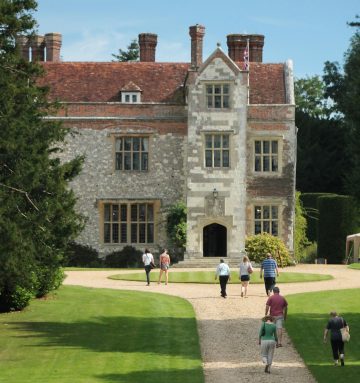2020 has been referred to as the “Year of Austen.” With the ushering in of new Austen-themed TV, movies, and other Austen-centric programs, the beloved 18th-century author continues to maintain her relevance in the 21st-century. Yet another Austen-oriented work out of the rest, Natalie Jenner’s debut novel, The Jane Austen Society, provides readers everywhere with a beautifully crafted story akin to something Austen could’ve written herself.
The story is fictional, interweaving a myriad of characters into one central plot line, the foundation of the Jane Austen Society (which really does exist!). Set at the close of World War II, Jenner’s novel centers around 8 fictional Austen lovers living in and around Chawton, Hampshire, where Austen resided at the end of her life. Jenner’s story delves into the lives of the 8 and those around them, who, truthfully, couldn’t be more different from one another. Ranging from a Hollywood actress to a local farmhand, the book’s central characters, while all different in wealth, lifestyle, and ambition, are united by their love for Austen and desire to maintain her legacy, a theme that rings true still for many modern literature lovers. Ultimately, The Jane Austen Society is so successfully likable because of its seamless combination of history and fiction to create a unique world and its dependence on characters to drive the novel forward.
I'd like to stop crying but it's very hard when you read a review like this on your #pubday:
"Certain authors know how to capture the most important parts of our lives…Natalie Jenner [succeeds] in capturing the essence of Jane Austen and what she means to her readers." https://t.co/E6UiEY1USV
— Natalie Jenner (@NatalieMJenner) May 26, 2020
Welcome to Chawton
By far, the most stunning thing about The Jane Austen Society is its use of detail. Jenner masters the art of providing imagery and immersive details without bogging down the reader. From the first page, I was hooked on the narrative she spun because of how inclusive the text is. Jenner does a gorgeous job of creating a world that sucks the reader in. She uses real places, like Chawton House, and enables them to come alive for the characters in her story.
Every word she uses seems intentional. Jenner doesn’t waste time in her novel on senseless details; she only provides the reader with necessary notes of scenery. Because of her care for the setting of the story, I came out of The Jane Austen Society feeling like I had spent a week in Chawton. I could imagine the age of the ancient cemetery and church that touched Austen’s life, I could picture the quiet vastness of the Knight family library and its countless volumes. Jenner sets the stage of her story perfectly, allowing for easy interactions from every character introduced to the setting, regardless of their love or affiliation with Austen’s world.
Character Charm
Similarly, Jenner’s characters are incredibly written. Because the novel is so character-driven, Jenner delivers on the reader’s expectations of full, rounded characters. Coming out of the novel, each of the story’s protagonists feels familiar. I exited The Jane Austen Society acquainted with the sweet Evie Stone and glamorously compassionate Mimi Harrison. The characters of Jenner’s novel became more than words on a page or players in a plot—they felt real.
Part of the effectiveness of Jenner’s characters is that they’re both mirrors of Austen’s famous figures but completely separate from them as well. Jenner writes her mains with characteristics and relationships that echo the famous ones written by Austen. It’s evident that Jenner intended to splice familiarity into her plot by modelling her characters around Austen’s, and I think she easily could’ve left her novel at that.
But Jenner chooses to do more with her story. She gives each character a backstory, their own personal trauma and dreams. No figure in her story feels neglected or unknown, with special detail given to the focuses of Jenner’s story. I was amazed at how human Jenner made her characters feel. Despite the story taking place in the 1940s, I found an ounce of relatability in every one of Jenner’s main characters. Every one of them resonates with the real world, to Austen lovers and casual readers alike.
No, You Don’t Need to Worship Austen to Read the Novel
The beautiful thing about Jenner’s novel is that, even though it’s a story about Jane Austen and her impact on the book’s characters, the reader doesn’t have to be fanatically familiar to enjoy the read. Personally, I’m only casually acquainted with Austen (though I will say, I’m inspired to learn more after reading this novel!), and I loved this book. I found the references and parallels to Austen’s works, notably Pride and

via Suzy Hazelwood for Pexels
Prejudice, Emma, and Sense and Sensibility, to be charming.
Jenner’s characters, as well as Jenner herself, are notably passionate about the English novelist. Their love for Austen and her books provides the novel with a sense of quaint endearment. Because the characters are so compelled by Austen and her story, I felt the same, as a reader, even if I hadn’t previously. The smart conversations carried out by the charming Dr. Gray and fiery Adeline Lewis about the subtlety of Austen’s text is phenomenal. Jenner writes The Jane Austen Society from a clear place of love and reverence for the author, and that love carries the reader through the story, even if they’re not the biggest fan of Austen from the start.
The Takeaway
The Jane Austen Society is a fun, graceful summer read for anyone interested in a modern take on Austen. For a debut novel, Natalie Jenner’s writing style is refined and inclusive, appealing to readers of all ages and interests. The plot is easy to follow and the chapters are concise and interesting to read. Overall, I would recommend The Jane Austen Society to anyone interested in a character-centric novel with an interesting historical perspective. My final rating is a healthy 4 stars out of 5.
You can find The Jane Austen Society here, out now.
Featured Image via St. Martin’s Press.












